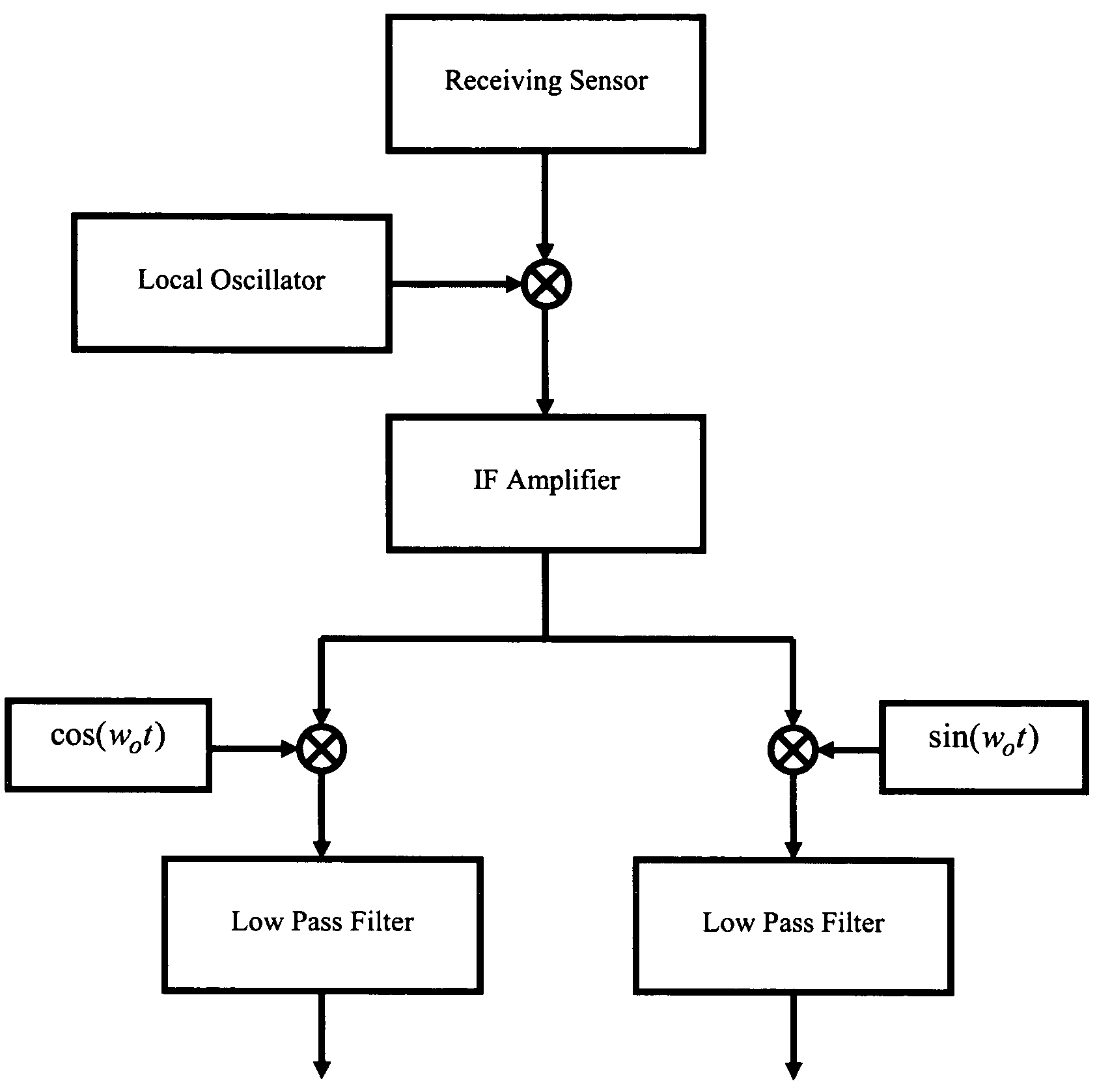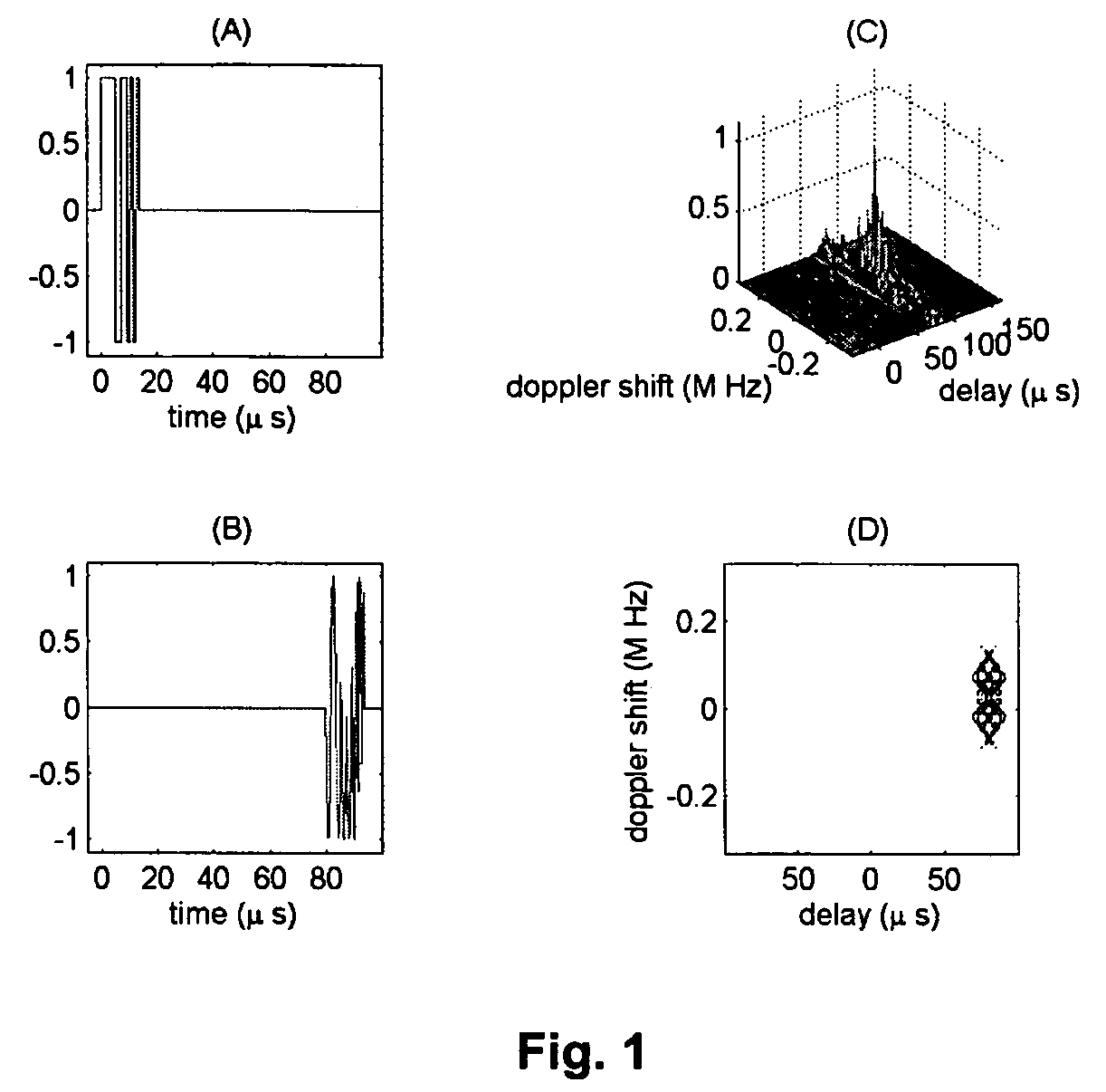Methods for detection and tracking of targets
a target detection and tracking technology, applied in the field of active sensor applications, can solve problems such as processor intensive and complex computation
- Summary
- Abstract
- Description
- Claims
- Application Information
AI Technical Summary
Benefits of technology
Problems solved by technology
Method used
Image
Examples
Embodiment Construction
[0026]The cross-ambiguity function reveals the presence of an object in sensor applications. However, due to the associated complexity in the implementation of the required processing, detection in the ambiguity domain is rarely used in practice. In this patent application, an alternative method of detection of an object in the ambiguity domain is proposed. In the preferred embodiment, slices of the ambiguity function, which are the samples of the cross-ambiguity function lying over a line or line segment, are used to detect the presence of an object Doppler shift / time delay plain of the cross-ambiguity function. Slices of a cross-ambiguity function can be computed efficiently and accurately by using fractional-Fourier transformation, without computing the entire cross-ambiguity function. The fractional Fourier transformation of a signal x(t) is defined as:
x2φ / π(t)=∫K2φ / π(t, t′)x(t′)dt′, (1)
where φ is the transformation angle, and K2φ / π is the transformation kernel defined as:
K2φ / π...
PUM
 Login to View More
Login to View More Abstract
Description
Claims
Application Information
 Login to View More
Login to View More - R&D
- Intellectual Property
- Life Sciences
- Materials
- Tech Scout
- Unparalleled Data Quality
- Higher Quality Content
- 60% Fewer Hallucinations
Browse by: Latest US Patents, China's latest patents, Technical Efficacy Thesaurus, Application Domain, Technology Topic, Popular Technical Reports.
© 2025 PatSnap. All rights reserved.Legal|Privacy policy|Modern Slavery Act Transparency Statement|Sitemap|About US| Contact US: help@patsnap.com



